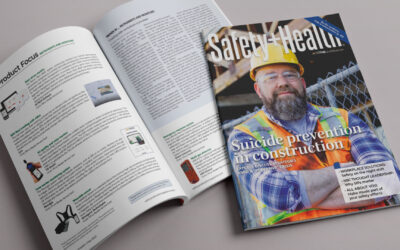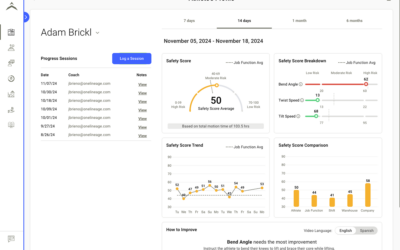Ergonomic injuries are one of the most common workplace injury categories in the U.S. today. The Bureau of Labor Statistics estimates that over 30% of incidents resulting in days away from work were due to ergonomic-related injuries, contributing up to $54 billion in direct costs annually. The consequences can include symptoms like pain and soreness, even resulting in sprains, strains, and other diagnoses broadly categorized as musculoskeletal disorders (MSDs) that often result in medical treatment. But what exactly causes an ergonomic injury, and how can it be prevented?
Common Causes of Ergonomic Injuries
Ergonomic injuries arise predominantly from the use of an individual’s body in a manner that results in pain, discomfort, or negative body reaction. Oftentimes this can be brought about by:
- Sustained periods in an uncomfortable posture
- Repetitive motion involving the same body parts
- Overexertion related to forceful body movement
- Sub-optimal body mechanics while performing work tasks
Many office workers are familiar with ergonomics related to a workstation – getting a comfortable chair, adjusting keyboard position for easier typing, and so on. These modifications can reduce the strain on specific body areas throughout the day during static postures, and can reduce discomfort as a result.
In an industrial workplace such as a warehouse, manufacturing center, or distribution facility, the movements required by Industrial Athletes™ are typically much more dynamic and fast paced. Common operations required include lifting, reaching, crouching, and operating powered equipment. Due to the changing nature of these environments and high capital investment required to modify them when compared to offices, job tasks frequently require the use of stressful body positions – which are a key contributing factor.
Common Catalysts
Combined with high demands on worker productivity over the course of a 10-12+ hour shift, workers are incentivized to complete such repetitive motions as quickly as possible, leading to the use of sub-optimal body mechanics. As a result many Industrial Athletes™ are exposed to practically all of the ingredients that contribute to ergonomic injury throughout their day.
When an ergonomic injury does occur, the results are felt all around. In such manual jobs, an individual’s ability to move freely and comfortably is crucial to their ability to perform the required tasks, making an ergonomic injury severely limiting. Pain and limited ranges of motion may prevent workers who are experiencing symptoms from performing their job at all, resulting in days away from work and lost productivity.

Ergonomic Injury Prevention
Fortunately, ergonomists are professionals dedicated to the reduction of ergonomic injuries in the workplace, and have identified proven methods for preventing MMHs from afflicting the workforce. These include implementing engineering controls like job redesigns, or using technology to reduce the loads placed on Industrial Athletes™. Crucially too, this includes training and motivating a change in behavior from workers to utilize their body in the safest way possible throughout the day. While none of these interventions in isolation can guarantee the prevention of ergonomic injuries, an active safety program can drastically reduce the occurrence of these injuries in the workplace.
Conclusions
Ergonomics injuries have persisted for many years in the industrial space, and continue to afflict Industrial Athletes™. An aging workforce and growing physical demands related to warehousing, logistics, and distribution both contribute to the problem. However, the contributing factors to ergonomics injuries are well understood, and can be prevented with a proven safety approach.
Reduce Ergonomic Injuries In Your Workplace
StrongArm Technologies’ SafeWork System can help reduce ergonomic injuries in your organization. Calculate your safety ROI and request a trial today.




